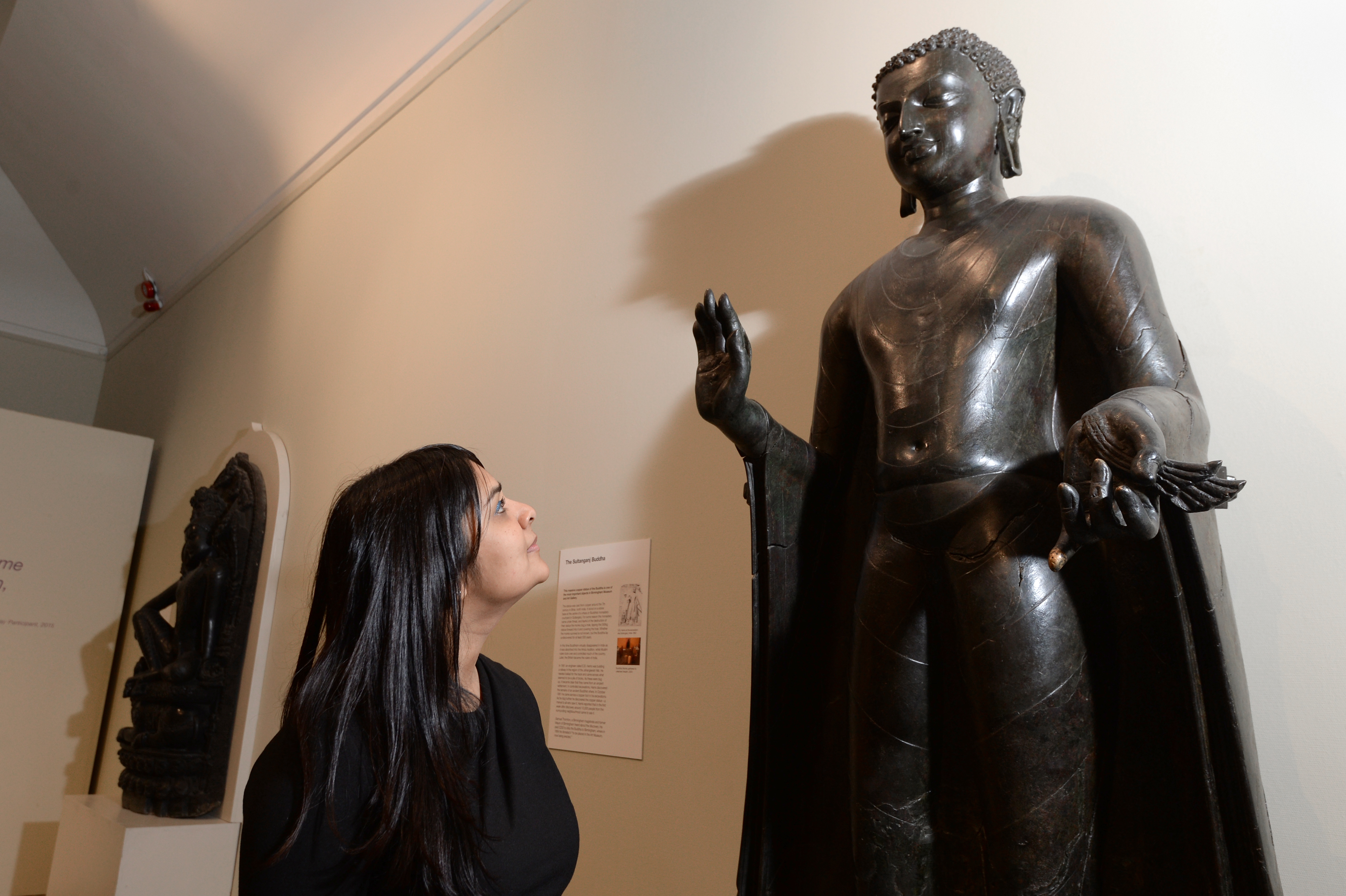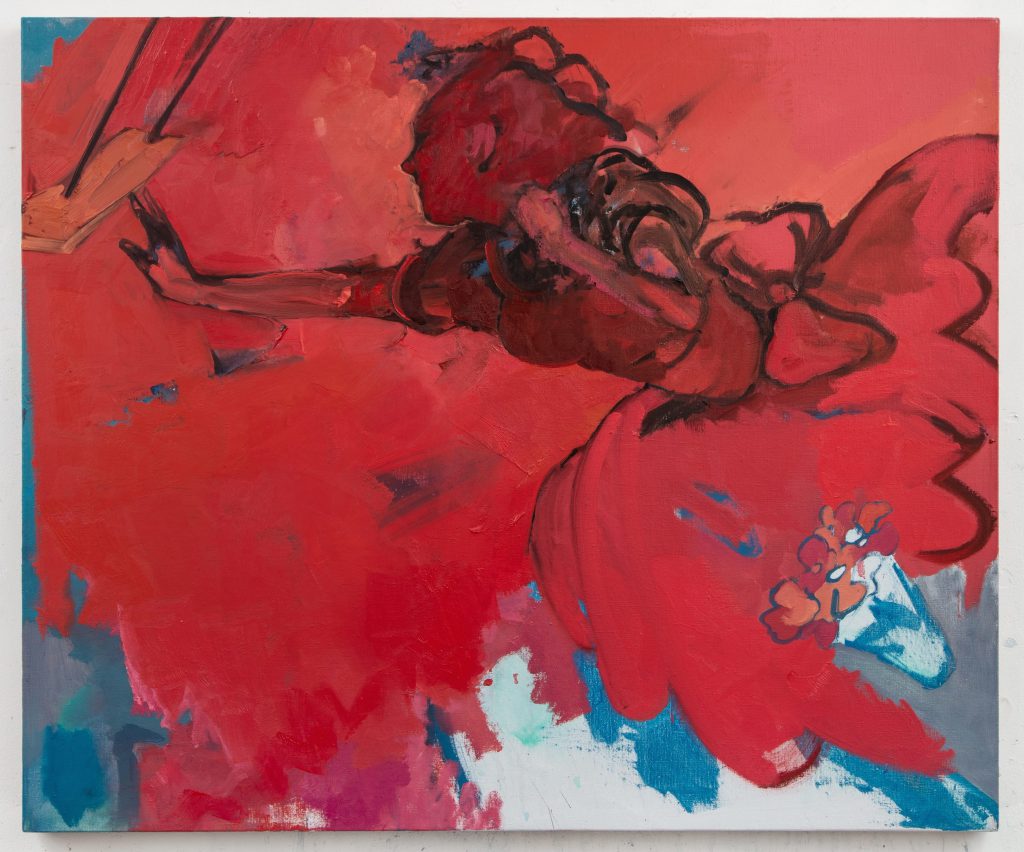Gurminder Kenth studied Art and Design at university, and in her final year realised she wanted to work in the arts, after designing an exhibition about arranged marriages in Indian culture. She embroidered text into her cousin’s wedding dress, using words such as ‘fear’ to describe the emotions felt by brides about to commit to a life with a man they barely knew. Producing this exhibition made Gurminder recognise that the visual arts could be used to tell stories, and that she wanted to be a part of this.
First graduate job
After graduating, she returned to her home city, Birmingham. Her first job was working in the Jewellery Quarter, checking the hallmarks on jewellery in The Assay Office. Whilst working here, she applied for jobs at all the local museums and galleries, from Ikon to Birmingham Museum & Art Gallery. She didn’t hear back from a year, but didn’t give up.
Her big break
Eventually, Ikon called her to say that they needed a volunteer to help with a summer exhibition project. After this short stint of volunteering, Ikon then presented her with a casual post. At this point, and to the surprise of her parents, she gave up her full-time, well-paid job, to accept casual shifts in the gallery. It paid off; not long after she was offered a job as a Gallery Invigilator.
BMAG & MA
From there, her manager at Ikon persuaded her to apply for Birmingham Museum’s diversity scheme traineeship, which aimed to diversify the workforce in cultural institutions. Despite a daunting interview with a panel of 6 museum employees, she was successful. During the 2 year programme, she also completed her MA in Museums Studies at the University of Leicester, combining theory with practical work experience. When asked whether she would recommend studying on an MA, Gurminder said she definitely does:
“An MA in Museum studies or Art History will allow you to develop, learn theory alongside your practical work experience and meet a diverse range of people, many of whom you will keep with you on your journey into the art world. It is a form of self-investment”.

Since then, she has made her way up to the top of Birmingham Museums, working across their venues and collections. As the Manager of Birmingham Museum & Gallery, she currently looks after and works with many departments, from Curatorial to Learning and Retail. It is an operational and strategic role, which includes financial forecasting. She tries to see the museum as a visitor, taking into consideration the presentation, branding, safety and services on offer to the public. She also represents the museum in working groups across the city, developing partnerships with businesses, and other arts organisations.
“I always put myself back in the visitor’s footsteps. It is the small things, as well as the big things that matter in the museum, and engage visitors. Last year we had 900,000 visits to this site [Birmingham Museum & Art Gallery] alone”.
One of her proudest moments was working on the Arts Council funded ‘Night in the Museum’ event, and she recently led a proposal for the museum to house Dippy the Dinosaur, who is on tour from the Natural History Museum; it was successful and the dinosaur will be arriving in May 2018! Gurminder, when asked about the downsides of her role, says only the long hours due to her commitment and love for her job:
“If you work for a museum you tend to care a lot. It’s not a job you do primarily for the money; you are rich and gain in so many other ways”.
Top skills required for her role:
- Organisation skills
- Interpersonal skills
- Negotiation skills – with both internal and external stakeholders
- Management
- A sense of humour
Her top tips for graduates wanting a career in the museum sector:
- Persevere: don’t give up on yourself
- Give it time: there are many varied routes into museums
- Be passionate: it shows!
- Volunteer: see volunteering as a form of self-investment, in which you will learn many transferrable skills. Gurminder still volunteers at other arts organisations, giving something back and sharing her skills and expertise with others.
- Believe in yourself and stay true to what you want. As a 15 year old, Gurminder was told that no one from Smethick could work in a museum, and was expected to join her peers in a traditional field such as law or medicine. Look where she is now…
Volunteer at Birmingham Museum & Art Gallery
The scope of volunteering at the Museum and Art Gallery is huge, from working in Conservation to Education and Retail, across 9 different sites. To find out more, you can visit the website here.


